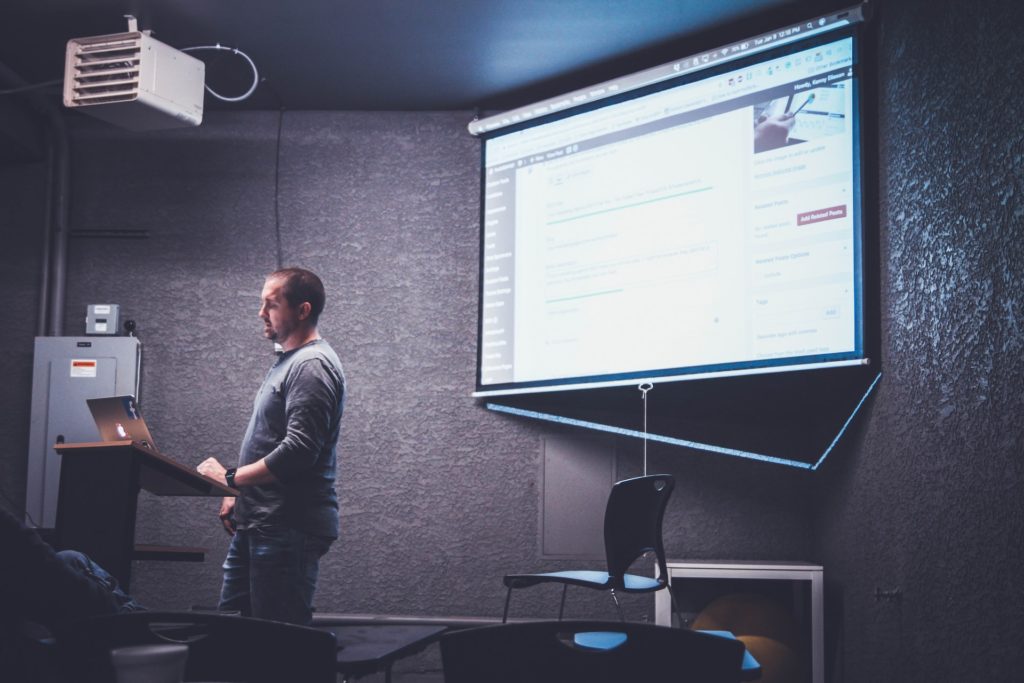
Advancements in technology have radically changed the way we work. Employees are working in different time zones—sometimes even from home—and board room meetings are moving online to accommodate everyone. There are plenty of benefits to an online meeting, too. Not only can you include employees from around the globe, but you can also do it at a low cost. Many online meeting platforms require a monthly subscription—but that’s a small price to pay compared to flying in a dozen employees for an in-person event.
Of course, there are times when meeting in person is the best option. But those should be saved for important yearly summits or to launch a new product or program. If you need to address all your company sites at once, or if you just need an hour on the VPs busy schedule, an online meeting is your answer. Online meetings are also helpful for employees who are working from home sick (but well enough to work!), or not coming into the office that day.
While online meetings certainly fill a need, they have their own challenges, too. Employees might find it harder to concentrate if they’re not in the room with everyone. And, because of that, it can be hard to tell whether your meeting was truly successful. Before scheduling that online meeting, make sure you’re prepared with the following components—so you and your employees are set up for success.
Before the Online Meeting

An agenda
Before you schedule your online meeting, create an agenda for it. The agenda should outline the different components of your meeting so attendees know how to prepare. If there will be multiple speakers or sections, include time stops on the agenda to keep everyone accountable.
Bonus Tip: Keep your goal list short, to 2-3 realistic goals.
Along with a general meeting outline, your agenda should also include meeting goals. What do you want to accomplish by the end? Your goals can be general or specific. For example, you may simple want to train your team on a new product. Or you might have a specific end goal, like choosing a new tag line and color palette for an updated brand compass. Once you have your outline and goals established, include them with your online meeting invitation.
A PowerPoint presentation or handout

While your agenda lets attendees prepare, a presentation or handout does, too—and helps everyone follow along during the meeting. When attendees have something in front of them, they can take notes and physically turn the page as the speaker moves to the next slide. Plus, attendees can keep the presentation for future reference—including all their important notes. A handout can accomplish the same thing. But unless it’s necessary, your meeting doesn’t need a presentation and handout.
Bonus Tip: Every in-person meeting should have this, too!
Just like your agenda, the presentation or handout should be sent ahead of the online meeting. But while an agenda should go out with the invitation, your presentation or handout can be sent 3 to 7 days ahead of the meeting. In other words, it doesn’t need to go out along with the agenda. This gives you and other speakers a chance to prepare. Then, you hand off your prepared notes to the attendees.
During the Online Meeting

Scheduled breaks
Every meeting that lasts more than an hour needs a scheduled break (or more!). Your employees need to use the restroom, get more water, etc. And while in-person meetings give them the freedom to do so during a session, they may feel uncomfortable leaving their computer—even for a bio break. Scheduled breaks will give them a chance to stretch and do what they need, without missing important details or feeling disruptive.
Bonus Tip: Schedule a group stretching session, so everyone has a chance to get out of the chair and move together.
Breaks also give attendees time to re-focus for the next discussion or session. Even 10 minutes will let them clear their head, find their notes or questions for the next slide, and take care of any emails that are nagging them. Then they’ll be ready to engage in the next section of your meeting!
After the Online Meeting
A summary
Once the meeting is over, summarize the key takeaways and action items—including who’s responsible and what the deadline is. If you designated a note taker, the summary shouldn’t take long to type up. Which is a good thing, you should send the summary on the same day or day after the online meeting. The sooner you send it, the fresher it will be on everyone’s minds.

If your summary has action items, follow up individually with anyone who was assigned a task. Make sure they know what’s expected, including the scope of the project and any deadline(s). If you have to schedule another online meeting to discuss next steps with multiple people—just make sure you have all five of these key elements!
A recorded version
For important announcements, training sessions, or project kick-offs, consider recording your meeting. This will achieve two goals. First, you can share the meeting with anyone who wasn’t able to attend. (Either in part, or entirely.) Yes, invitees who don’t attend should still receive any agendas, handouts, and summaries. But those won’t capture everything for someone who didn’t attend. Let them listen in on the meeting when they have the time.
Bonus Tip: Let attendees know that you are recording, so they feel less pressure to take extensive notes.
And second, you can send the recording to attendees as well. This is especially helpful for training sessions, or a meeting with a lot of Q&A. Attendees will do their best to take notes, but they may not be able to write fast enough. Plus, it can be hard to hear others on a conference or video call. With a video recording, employees can re-listen to the parts they missed.
Conclusion
Your online meeting is important, or else you wouldn’t be having it! When you prepare with these five items, you and your employees will get the most out of your meeting. You won’t need to meet about the same thing again in a week! We recommend using these tips for any meeting, no matter how big or small. (But especially for the big ones!)
What else helps keeps your online meeting on track? Do you ask employees to turn the camera on, or not?

